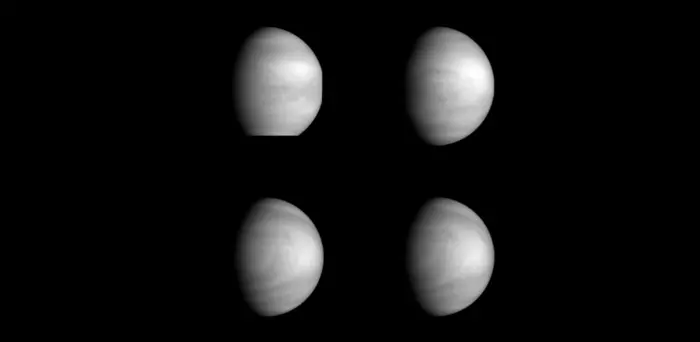Amidst acidic clouds
iron’s whisper weaves
through vapours thick
and deep,
a violent conference
of forces,
minerals,
reactions.
Each voice
drowned out
below
the silent space
between.
In sharp and ferrous hues
heavens dissolve
and shift,
creating spectrums
unseen,
in clouded rifts
too close
to touch.
A steely cue
that the universe
holds realms
beyond our gentle blues,
worlds untamed
in sight
in mind
in awe
beneath
the swirling mists
of neighbouring skies.

This poem is inspired by recent research, which has revealed the mysterious missing component in the clouds of Venus.
The mysterious clouds of Venus, our neighbouring planet, have long intrigued scientists and space enthusiasts alike. Unlike the Earth’s clouds, which are mainly composed of water vapour, Venus’s clouds are believed to be made up of sulphuric acid, along with a mix of other elements, including iron-based compounds. These ingredients vary in concentration at different heights in Venus’s dense atmosphere. Understanding these clouds is not just a matter of curiosity, but crucial for comprehending the planet’s unique environment and weather patterns.
In this study, researchers investigated the complexities of Venus’s clouds, particularly focusing on the iron-containing minerals that could exist under the harsh conditions found there. They discovered that ferric iron, a form of iron, can react with sulphuric acid to create two specific mineral types: rhomboclase and acid ferric sulfate. The study suggests that these minerals, along with dissolved iron in various concentrations of sulphuric acid, might explain some of the unexplained features observed in Venus’s ultraviolet light spectrum. This research points towards a rich and complex chemistry within Venus’s cloud droplets, which significantly impacts how the clouds look and behave, as well as the overall atmosphere of the planet. This opens a new chapter in understanding Venus’s atmospheric phenomena, which could have broader implications for planetary science.